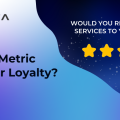Web3 and the future of Customer Loyalty
Reading time: about 8 minutes

The world is changing and with it comes a paradigm shift in the way we perceive the internet and our online lives. But with this change comes far-reaching implications in the way we interact with, for the lack of a better term, our basic consumer experiences.
With the advent of Web3 fast approaching its full realization in mainstream culture, what does this mean for customer loyalty and customer experiences?
So what is Web3?
Web3, as the name suggests, is the third iteration of the internet, whereby it utilizes technologies such as blockchain, metaverse, and cryptocurrency. It also completely changes the way perceive the concepts of interoperability and decentralization. What do I mean by this? Essentially, in Web3, the users are the owners.
This is in stark contrast to our current Web2 platform as users, (i.e, us) are dependent on the facilitation of technology conglomerates (Meta, Google, Apple, Microsoft, Amazon, etc.) to allow us access to our own data. Moreover, this control of our data makes it difficult to monetize without being subject to regulations by these conglomerates, who in every practical sense of the word, have a digital cartel, if you will.
So how does Web3 fit into all of this?
Web3 will provide users full ownership of their data which is facilitated by blockchain technologies.
The decentralization of the internet
No doubt if you have spent less than five minutes with your average crypto-phile, the phrase decentralization certainly has come up when describing blockchain. In essence, the paradigm that covers Web3 will ‘decentralize’ the internet whereby, it runs on its own network instead of being curated by the aforementioned tech giants. This implies that users will have more control over who can access their information and how they can share their information.
Blockchain removes the ‘middle-man’ so to speak when it comes to information sharing, whereby user information is stored on the blockchain without having the need to rely on external or 3rd parties. Blockchain essentially is unhackable and the way in which blockchain achieves this is beyond the scope of this article, but we have explained this in heavy detail before.
The community that is Web3 is self-sufficient and relies heavily on collaboration. The concept of community in Web3 is a driving factor in the whole Web3 ecosystem as the self-sufficient and self-building nature is all dependent on the users who wish to engage in it.
This opens a world of opportunities for brands that can create communities revolving around brand products, values, and customers.
The Past, The Present, and The Future….
The first iteration of the internet, or simply Web1 was used to access information between networks that was heavily controlled and scrutinized due to its limited capacity. Back then, only a select handful of individuals possessed the power to edit content, let alone share it.
After genesis, Web2 came into being and is still the world that we are heavily involved in. In all practical terms, Web2 began to loosen its control as the sphere of its former controlled influence began to dissipate. With the introduction of user-generated content, interactivity and sharing became the norms (just look at how social media has become quintessential in our lives). But with this garnered freedom came risks, especially regarding data privacy and the abuse by tech giants who had the power to censor or outright steal content.
So where is the future heading? Well, Web3 is going to further push the envelope of ‘less restricted’ internet use and allow users to tear off their proverbial shackles by providing them with a decentralized disposition. This disposition is the facilitation of individual ownership of data through the means of a blockchain wallet.
Web3, marketing, and the cookie monster's retirement
Marketing today is facilitated through various methods of CRM or customer data platform management whereby customer data and transactional data are used to create targeted marketing strategies.
In this methodology, the customer is not in a position of power due to the number of possible loopholes they have to jump to be removed from such databases or, privacy law is still playing catch up in the distribution of data. Which in turn can have a negative consequence on the whole umbrella of customer experience. Not to mention the declination of cookies by major tech companies.
In Web3, brands will ask customers for access to their digital wallets, rather than holding data in a customer data platform. This will allow customers to share a ‘key’ with brands that unlocks their data. The customer has full control of the key and if they wish no longer to interact with that brand, they can simply turn off access to their wallet.
Loyalty1, Loyalty2, and Loyalty3
The first iteration of customer loyalty was a developed method about making the consumer jump through hoops more than other consumers to validate some form of loyalty. As soon as you’d ‘earned’ that free coffee or shopping voucher, you were likely never to return as the basic principles of earn and burn were utilized and you had to repeat the whole cycle. This did not really form a solid foundation of mutual respect and trust, hence Loyalty1.
Loyalty2’s contribution has allowed more power into the hands of the consumer or at least tried to balance out the interests of the brand and customer. With the current trends of digitization and personalization through applications have provided a completely accessible loyalty environment where customers can order items, such as a coffee whilst waiting in line and have their points earned before the order has begun. This modern system is functional and provides both parties with a net positive as Loyalty2 is extremely effective in driving critical business value for an enterprise — establishing customer identity, enabling permission-based data acquisition, influencing consumer behavior, and ultimately establishing more profitable customer relationships. This is further supplemented by the value that these interactions created as they happen in an echo chamber where the conversation is between the consumer and brand. More recently, loyalty innovation in Loyalty2 has garnered the use of digital and mobile UX as a way to provide greater personalization of content, experiences, and transactional behavior.
Loyalty3 is about the new capabilities that Web3 delivers, that pertain to portability of value, ownership, and interoperability. In the advent of the new world of crypto and blockchain functionalities as the basis, the potential for customer experience, loyalty program management, and community building to change is massive. The use of crypto wallets has allowed users to authenticate into a decentralized peer-to-peer network on the blockchain, whereby the ability for consumers to have undisputed ownership over a wallet’s tokens/NFTs can not be frauded.
The 5 ways that Loyalty3 and Web3 will change customer loyalty:
- Rewards won’t be limited to transactions whereby Brands will have the option to reward customers for their time and engagement
- Brands will have the ability to offer high-value rewards to influencers or to top-tier brand followers. Loyal customers are drawn to the scarcity and power of NFTs whereby providing access to exclusive events, unlocking exclusive rewards, and owning a part of brand history are all high-value loyalty schemes.
- Customers could be incentivized to share their ‘digital wallet’
- Users can be incentivized to create and disperse user-generated content to help brands reach new audiences
- Points and rewards now have the ability to be decentralized and avoid the potential for fraud
Web3 is already becoming a revolutionary shift in the way we perceive the internet and how Brands are approaching the new wave of marketing opportunities whereby, this transformation is showing little signs of slowing. This bodes well for brands and customers alike, as brands will have more power to influence consumer behavior and customers will be able to capture the value that they truly own and can use it to enhance their lives. This is a clearcut sign that the future is much closer than we think.
- Author: Alexander Kubicki and Sparta Loyalty
- Entry Date: 23 08 2022





